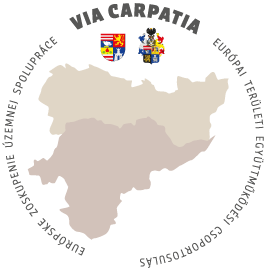The Mausoleum of Count Gyula Andrássy in Trebišov
The Mausoleum of Count Gyula Andrássy is one of the most important cultural monuments in Trebišov. Built in 1893 based on the designs of German architect Arthur Meining, the structure is a notable example of Neo-Gothic architecture. The sarcophagus inside the mausoleum, created between 1893 and 1895 by Budapest sculptor Juraj Zala, holds the earthly remains of Count Gyula Andrássy, who passed away in 1890. He was originally buried in the crypt of the local Roman Catholic church but was transferred to the mausoleum in 1894.
Gyula Andrássy (1823–1890) was an outstanding Hungarian politician and statesman. After studying and working abroad, he became the governor of Zemplén County and later the vice-president of the Hungarian Parliament. Following the Austro-Hungarian Compromise of 1867, he became Hungary’s first Prime Minister. From 1871 to 1879, he served as the Foreign Minister of Austria-Hungary, playing a key role in strengthening the alliance with Germany and curbing Russia’s influence in Central Europe and the Balkans.
Resting alongside the count in the mausoleum are his wife, Katalin Kendeffy, and their son, Tivadar Andrássy. The sarcophagus is adorned with bronze cartouches depicting family crests and an angel statue symbolically protecting the souls of the deceased. Next to the sarcophagus is the tin coffin of their son Tivadar, and a statue of their daughter Helena (Ilona) kneeling in mourning, expressing the family bond and the sorrow of loss.
Source: www.trebisov.sk































